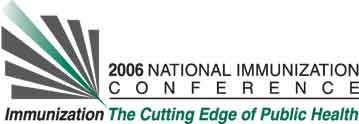Barbara Watson1, Scott Schmid
2, Karl Heath
1, Dana Perella
1, Donovan Robinson
1, C. Victor Spain
1, and Meredith Reynolds
3. (1) Philadelphia Department of Public Health (PDPH), 500 South Broad Street, VASP, 2nd Floor, Philadelphia, PA, USA, (2) National Varicella Zoster Virus Laboratory, Centers for Disease Control and Prevention (CDC), Atlanta, GA, USA, (3) Viral Vaccine Preventable Diseases Branch, Centers for Disease Control and Prevention (CDC), 1600 Clifton Rd, MS E-61, Atlanta, GA, USA
Learning Objectives for this Presentation:
By the end of the presentation participants will be able to describe the clinical presentation of vaccinated HZ cases by viral strain.
Background:
Herpes zoster (HZ) caused by reactivation of latent varicella zoster virus (VZV) appears to be rare in VZV vaccinees. A severe HZ case in a vaccinated immunocompromised child experiencing reactivation of vaccine strain VZV has been reported; vaccine strain reactivations also have been documented in apparently healthy children.
Objectives:
To describe the VZV viral strains (wild-type versus Oka-Merck vaccine VZV) isolated from HZ cases in vaccinated children and the clinical presentation of vaccinated HZ cases by viral strain.
Methods:
As part of routine surveillance, PDPH has obtained lesion specimens from suspected HZ cases among VZV vaccinees <20 years of age since 2001. The CDC National VZV Laboratory tested specimens for the presence of VZV DNA and discriminated wild-type and Oka-Merck vaccine strain VZV using strain-specific Polymerase Chain Reaction (PCR). PDPH staff interviewed the suspected cases to collect clinical information. We performed descriptive analyses to examine clinical presentation by viral strain for a case series of vaccinated children with HZ.
Results:
Specimens from 13 vaccinated HZ cases <20 years of age were tested using strain-specific PCR. Four vaccinated HZ cases aged 6-11 years were wild-type VZV reactivations, and nine aged 1-9 years were vaccine strain reactivations. One wild-type reactivation and one vaccine strain reactivation reported previous varicella histories. None had immunocomprising conditions. Three-fourths of the wild-type reactivations experienced moderate/severe pain compared to 29% of the vaccine strain reactivations. Complications occurred in two wild-type reactivations with one hospitalization. Household VZV transmission occurred from the hospitalized case.
Conclusions:
Our case series suggests that among healthy vaccinated children, HZ due to reactivations of vaccine strain VZV may be less severe than cases due to wild-type VZV. Further study including testing for viral strain identification is needed.
See more of Posters
See more of The 40th National Immunization Conference (NIC)

